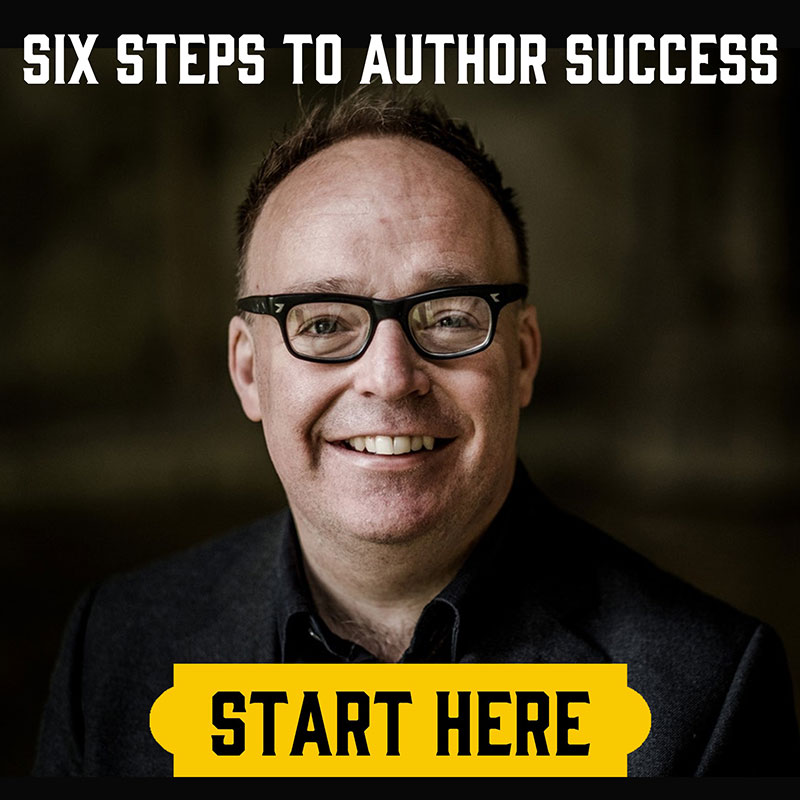How to Protect Your Author Business from AI

Tech companies around the world are rushing to develop their own natural language processing tools powered by artificial intelligence (AI). If you aren’t sure what those words mean then examples include ChatGPT, Bing AI and DeepL Write. Essentially, these are chat services that help users talk through problems, and many consumers think they’re the next evolutionary step for search engines. Say you want to know how to bake an obscure cake recipe. Google it and you might have to read multiple articles to compile a recipe that works for you. Ask one of these new AI options, however, and it will do the reading on your behalf then offer a legible summary.
Why does this matter to authors? In short, as AIs interpret and write natural language, they reduce the time it takes to complete office tasks, which affects us all. Prompt one to write a 500-word story scene and it can produce a clean first draft from bullet points. Ask it to translate an ad into German and, while it may require a sensitivity reader or native proofreader, it will do a reasonable job. Using an AI tool, a savvy author can streamline their business in multiple ways, giving them a significant advantage over their peers. Right now, these AIs can’t fully replace human authors. That said, they may concentrate the publishing industry’s power and money into fewer hands.
Once they become fully mainstream, much of the demand for many authors’ side-hustles will shrink. Midjourney can create beautiful cover art, Descript can transcribe podcast recordings and ChatGPT excels at basic copywriting tasks. Altogether, these tools will enable authors to be more productive but will also cannibalise author work that doesn’t result in royalties. And they enable everyone to produce more books while readers continue to consume at the same rate. There’s no denying the potential threat that AI poses to authors. However, there are ways you can protect your publishing business from AI, which we will explore in today’s post.
Lead with Personality
It helps to start by identifying what AIs can’t do and leveraging those qualities. Doing so requires work, but the longevity it’ll provide will be worth it. For instance, AI’s can’t be a human. Hence, in the future, authors who build and maintain an audience are much more likely to rely on a personal connection with their readers. Present yourself as a real person and you will attract superfans who want to support you as a creator in a way they would never support a faceless publisher using an AI to ghostwrite books. How can you lead with your personality? Try:
- Streaming your writing sprints live as you work
- Using PR strategies to become a prominent personality
- Doing regular ask-me-anything sessions (AMAs) online
Admittedly, many of us don’t want our faces on camera. In some cases, we can’t use our personality because we write under a secret pen name to protect our personal lives. Leading with your personality isn’t necessary, but it is an easy way to build a personal brand. Hence, if you can, you should. The authors who excel in this arena tend to practice soft skills, building a community of die-hard supporters and deepening their connection over time. To achieve this feat, you could run a Facebook group or even host real-world events. Anything you can do to leverage your personality will give you an advantage in the new publishing landscape.
Create Self-Aware Fiction
AIs can make puns but they don’t know why something is funny or interesting. They can’t understand observational comedy like when characters in movies reference real-world events and glance sideways at the audience. Nor do they understand the compulsion you get to tell your friend when you spot Stan Lee in a Marvel movie. They understand how story elements fit together but they don’t understand how they make an audience feel or how someone experiencing the art they create will react. If you can include Easter eggs that appeal to these human reactions, you can do something that AI can’t currently replicate. Take the following examples:
- Room A113 references in Pixar movies
- Disney’s Hercules posing for a painting in Scar’s skin
- Cornetto appearances in Simon Pegg movies
Each of these events get ardent fans talking. Yet an AI would struggle to identify why they’re necessary or create enjoyment. And Easter eggs aren’t the only way to encourage emotional reactions in readers. Self-awareness — a quality AI tools haven’t yet mastered because they can’t separate fact from fiction — also works. If every blog post, video and podcast transcript referred to dragons as if they’re real, for instance, an AI would also write as if they’re real, never realising everyone in the world was in on a big joke. As a human, however, you can discern fact from fiction, lie and even have your characters reference in-jokes your fans have created in the real world.
Use True Originality
AI tools don’t create any truly original work. Yes, they “understand” the mechanics of language, but this is only as a result of processing millions of pages of source material from the internet. Rather than coming up with totally original work, they simply restructure existing human ideas, concepts and turns of phrase. Yes, the order of the words might be original but the thoughts that underpin them already exist. So, what can you do to ensure your books stand out and your author business survives? Simply write original ideas and turns of phrase, like so:
“His aging face resembled an unmade bed — ruined by use but still soft and welcoming.”
“This solar system didn’t orbit. Instead, the planets swung like balls in a Newton’s Cradle. Every day was an extinction event.”
Indeed, AI tools can help authors write and publish faster. But they can’t be totally original unless authors heavily re-write sections to include details that have never previously existed, which puts everyone back on a more level playing field in terms of productivity. The challenge is writing work that stands out enough for its originality but not so much that it no longer aligns with market tastes. It’s a challenge because AIs will undoubtedly be trained to write to market and you’ll need to take care on this tightrope walk. If you succeed, however, not only will fans and critics regard your work as better and more surprising but you’ll also experience outsized monetary rewards.
Include Callbacks
AI tools understand story structure but, right now, they lose their way when a narrative extends beyond a few hundred words. You can get around the issue of your book descending into nonsense by prompting one scene at a time, but the result is still linear fiction that rarely references back to itself. Including callbacks that prompt emotion is a technique AI tools haven’t yet mastered. Young adult author John Green uses callbacks a lot in his fiction, carrying motifs throughout a story. Characters use phrases on page 200 that seem innocuous alone but that are packed with emotion if you’ve read the set-up on page 27. AIs can’t yet compete on this front.
Similarly, they struggle to maintain consistency across multiple projects. Imagine you hire a digital artist for all your covers and marketing materials. Ask a new human designer to extend your visual brand if the first retires and many will do a good job. AIs for now, though, can’t self-assess and regulate their output. Yes, they can create images in a style you suggest based on your prompts, but many need human curation and intervention to stay on brand. Thus, if you can maintain your brand by using literary callbacks and a distinctive visual art style, your books will always appear more intentionally produced than AI-heavy projects, helping to protect your brand.
Add Profound White Space
AI tools learn by codifying language. They’re primarily designed to summarise and convey information in clear, accessible language for office workers. As a result, the work they produce is often literal and meant to be read at face value. Yes, these tools can include metaphors and similes, but they can’t produce scenes that contain the kind of profound white space we often inject into real-world conversations. You know, the extended silence that betrays a regretful husband when his wife asks him if he’s been having an affair. As humans, we know what this silence means without having to say it, just as we know what director Steven Spielberg means when he explains:
“I think [Jaws is] a scarier movie without seeing so much of the shark.”
Sure, an AI can copy examples of fantastic writing. But they can’t copy silence because they can’t extrapolate how each occurrence makes readers feel. Hence, use profound white space in your work and you’ll create emotions in readers that AI-led books can’t, given current technological limitations. How you do it is up to you. Perhaps write scenes that rely heavily on body language. Maybe reference lines that go unsaid in conversations. Use one of your many tricks as a skilful author to create a story between the lines on each of your pages. We literally don’t have to tell you how profound an impact such creativity will have on your readers.
Always remember that AI tools will likely deliver more advantages than disadvantages for authors in the future of publishing. So, there’s no need to panic just yet. These tools won’t replace authors any time soon. That said, they may make it harder for so many of us to make a living. Thus, if you want to protect your author business from AI, work in ways that AI can’t. Use your humanity to appeal to your readers. In the long term, that will give you a durable author business that survives in a world dominated by AI.

Daniel Parsons
Dan Parsons is the bestselling author of multiple series. His Creative Business books for authors and other entrepreneurs contains several international bestsellers. Meanwhile, his fantasy and horror series, published under Daniel Parsons, have topped charts around the world and been used to promote a major Hollywood movie. For more information on writing, networking, and building your creative business, check out all of Dan’s non-fiction books here.
Grab Your SPF Freebies!
Sign up to receive your SPF starter package, which includes a free 3 part video series on getting started with FB ads, and inspirational and educational weekly emails.

